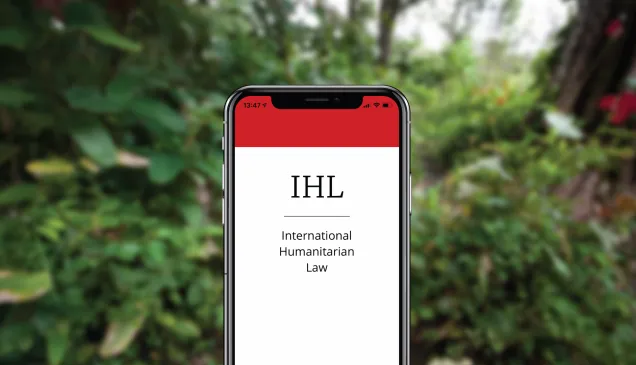War and international humanitarian law

Armed conflict is as old as humankind itself. There have always been customary practices in war, but only in the last 150 years have States made international rules to limit the effects of armed conflict for humanitarian reasons. The Geneva Conventions and the Hague Conventions are the main examples. Usually called international humanitarian law (IHL), it is also known as the law of war or the law of armed conflict.
International humanitarian law is part of the body of international law that governs relations between States. IHL aims to limit the effects of armed conflicts for humanitarian reasons. It aims to protect persons who are not or are no longer taking part in hostilities, the sick and wounded, prisoners and civilians, and to define the rights and obligations of the parties to a conflict in the conduct of hostilities.
Because it is law, IHL imposes obligations on those engaged in armed conflict. Not only must they respect the law, they have an obligation to ensure respect as well. It is not acceptable to turn a blind eye.
The cornerstone of IHL is the Geneva Conventions. The first was signed by 16 countries in 1864. For centuries before then, rules had applied to the conduct of war, but they were based on custom and tradition, were local or just temporary. 1864 changed all that and began a process of building a body of law that is still evolving today.
The initiative for the first convention came from five citizens of Geneva. One of them, Henry Dunant, had, by chance, witnessed the battle of Solferino in 1859. He was appalled by the lack of help for the wounded and organized local residents to come to their aid. Out of this act came one of the key elements of the first convention – the humane treatment of those no longer part of the battle, regardless of which side they were on.
It was at this time, too, that a neutral protective sign for those helping the victims of conflict was adopted; a red cross on a white background, the exact reverse of the Swiss flag.
In the century and a half that followed the body of international humanitarian law grew. The Geneva Convention was extended, in 1906 and 1929 so as to improve the conditions of sick and wounded soldiers in the field and to define new rules on the protection of prisoners of war. In 1899 and 1907, the Hague Conventions, mainly aimed at regulating the conduct of warfare, were also adopted. In August 1949, the four Geneva Conventions as we know them today were adopted. This time they also included the protection of civilians, reflecting the terrible experience of World War II.
Protocols were added to the Geneva Conventions in 1977 and 2005, and a range of other international conventions and protocols covering specific areas such as conventional weapons, chemical weapons, landmines, laser weapons, cluster munitions and the protection of children in armed conflicts has developed the reach of IHL. So too has the codification of customary law.
The core, however, remains the Geneva Conventions and their additional Protocols. They combine clear legal obligations and enshrine basic humanitarian principles.
• Soldiers who surrender or who are hors de combat are entitled to respect for their lives and their moral and physical integrity. It is forbidden to kill or injure them.
• The wounded and sick must be collected and cared for by the party to the conflict which has them in its power. Protection also covers medical personnel, establishments, transports and equipment. The emblem of the red cross, red crescent or red crystal is the sign of such protection and must be respected.
• Captured combatants are entitled to respect for their lives, dignity, personal rights and convictions. They must be protected against all acts of violence and reprisals. They must have the right to correspond with their families and to receive relief.
• Civilians under the authority of a party to the conflict or an occupying power of which they are not nationals are entitled to respect for their lives, dignity, personal rights and convictions.
• Everyone must be entitled to benefit from fundamental judicial guarantees. No one must be sentenced without previous judgment pronounced by a regularly constituted court. No one must be held responsible for an act he has not committed. No one must be subjected to physical or mental torture, corporal punishment or cruel or degrading treatment.
• Parties to a conflict and members of their armed forces do not have an unlimited choice of methods and means of warfare. It is prohibited to employ weapons or methods of warfare of a nature to cause unnecessary losses or excessive suffering.
• Parties to a conflict must at all times distinguish between the civilian population and combatants in order to spare civilian population and property. Adequate precautions shall be taken in this regard before launching an attack.
The International Committee of the Red Cross is regarded as the “guardian” of the Geneva Conventions and the various other treaties that constitute international humanitarian law. It cannot, however, act as either policeman or judge. These functions belong to governments, the parties to international treaties, who are required to prevent and put an end to violation of IHL. They have also an obligation to punish those responsible of what are known as “grave breaches” of IHL or war crimes.


